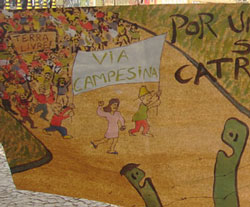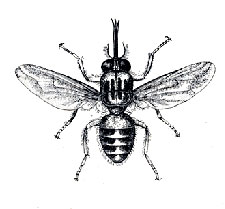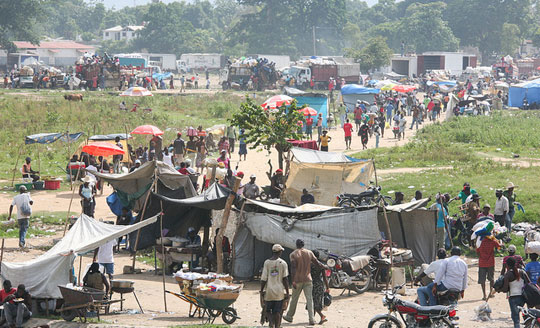
In this blog post we set out briefly the main lessons from our recently published
book on Malawi’s recent experience with agricultural input subsidies (Chirwa and Dorward, 2013).
Although this was published at the end of October, we actually finished the writing about a year ago. Since then there have been a number of reports on different aspects of the Malawi programme and the completion of another season of subsidy implementation. This blog post therefore also provides a bit of an ‘update’. The book can be
purchased from the OUP or
downloaded as an open access pdf.
The Farm Input Subsidy Programme (FISP) in Malawi was launched in 2005/6. By offering subsidised fertilisers and other inputs to farmers through a coupon system, it offered a potential way to increase food production and attack long-term national and household food insecurity and poverty. It has been heralded in some quarters (for example, by the
New York Times in 2007 and
Ban-Ki Moon in 2010), and criticised in others.
The book draws together six years of intensive evaluation work that we have undertaken with others, and documents what the programme did from 2005-2012. It also reviews the wide range of empirical studies on the programme. This is set in the context of changing understandings of agricultural input subsidies in poor agrarian economies and of the challenges they face.
We were also keen to draw on our separate and combined experience of Malawian agriculture to set the FISP in the context of evolving Malawian livelihoods, politics, and agricultural policies – a context that is critical for understanding the design, implementation and impacts of the programme.
What are the impacts of FISP?
It is clear that production has increased as a result of the FISP, as have food production and household income. However the scale of these increases is not clear because of data quality and availability difficulties.
Indirect programme impacts are a major but often largely ignored justification for subsidies. Again, estimating these indirect impacts – on the agricultural sector, on incomes, and on indicators of nutrition – is difficult. Nevertheless, the agricultural sector grew rapidly in the FISP period. Apparently inconsistent high maize prices from 2007 to 2009 need to be set against evidence for rising nominal and real wages (as measured against maize prices). There is also evidence for rising incomes, and falls in stunting and in the prevalence of underweight children. However, the 2010/11 IHS3 poverty estimates do not suggest any change in poverty incidence (National Statistical Office, 2012).
Impacts on the private input supply sector
The programme has had a mixed impact on the private input supply sector. The private sector has played a major role in the importation and procurement of subsidised fertilizers, and in the production and distribution of subsidized seeds, but its involvement in retailing of subsidized fertilizers has been very limited.
It is well known that subsidised fertiliser can ‘displace’ or ‘crowd out’ unsubsidized commercial sales in the short term, but there is some evidence that they can raise demand for fertilizers and improved seeds in the medium to long term. However, the realisation of clear benefits from expanding the role of the private sector requires mutual trust among stakeholders, systems of transparency and accountability, and policy consistency and credibility.
Costs and benefits
A critical set of questions focus on the economic benefits and costs of FISP. Benefit Cost Analysis needs to be used carefully. Precise estimation of the Benefit-Cost Ratio (BCR) remains difficult, but it is likely to average around 1.35 after allowing for the effects of multipliers, with a fiscal efficiency (the Net Present Value per unit of government expenditure) of around 0.6.
These estimates are sensitive to yield responses (and hence both programme implementation and weather), and international maize prices. Higher displacement or crowding out of commercial by subsidised sales does not affect the BCR much, but it does have substantial negative effects on fiscal efficiency.
These estimates suggest that the FISP has provided a good return on investment. However, there is scope for much improved efficiency and effectiveness to make future returns much higher.
Targeting
The effectiveness of targeting in the FISP and other programmes has been widely studied and discussed. Over the life of the programme, changes in area targeting have resulted in more equitable national distribution of input vouchers per household. There have, however, been only limited changes in targeting criteria and processes at beneficiary level.
Broad criteria for targeting the programme’s beneficiaries have led to wide variations in their application at community level, resulting in biases against poorer people receiving subsidised inputs. Widespread and increasing redistribution and ‘sharing’ of coupons has reduced this bias, but reinforced the likelihood of poorer recipients receiving fewer coupons than less-poor recipients. There have also been gender biases in some years, with female headed households receiving fewer coupons.
Graduation: getting out of dependency
Graduation from subsidies is widely promoted under the bland label of ‘exits’, but there has been little serious consideration of what this means in practice.
Graduation can be thought of as the removal of access to transfers without leaving current beneficiaries unable to pursue sustainable independent livelihoods. This allows graduation to be defined as the withdrawal of subsidy access without reductions in land, labour, and capital productivity in maize production. Putting this into practice is technically challenging and intensely political, and needs to consider the importance of wider programme impacts on individual beneficiary livelihoods.
Recent developments
Since we sent the book to the publisher in January 2012 we are only aware of one significant addition to the literature on the livelihood context of the FISP, a valuable and innovative study by Holden and Lunduka (2013). Using 2008/9 farm survey data, this shows that farmers place a very high value on fertiliser in terms of their unwillingness to sell fertiliser that they own, but are much less willing to buy fertiliser with cash. This suggests significant cash constraints on fertiliser purchases and important evidence of the FISP assisting farmers by addressing their fertiliser affordability problems.
Knowledge on the implementation of the FISP is extended mainly by our 2012/13 programme evaluation
(Dorward et al., 2013). There was little that was particularly new about implementation in 2012/13 apart from attempts to improve both transparency in coupon allocations (through public lists of recipients) and management of coupon redemption at input markets. The trend for increased sharing of coupons continued, as did significant discrepancies between total subsidised fertiliser receipts estimated from the household survey and recorded official subsidised fertiliser sales.
Kilic et al. (2013) update information on targeting with a detailed analysis of the 2010/11 Integrated Household Survey (IHS). Their findings largely support previous studies, reporting “the FISP targets exclusively neither the poor nor the rich… (it) reaches all socioeconomic strata of rural Malawi, and if there is any targeting it is in the middle of the distribution” and “a key factor in receiving vouchers is having a relationship with key leaders in the community”. There is no evidence for female headed households being less likely to receive coupons.
A number of 2013 reports and papers contain significant new information on different aspects of programme impact.
- Indirect impacts and poverty reduction: Arndt et al. (2013), using a Computable General Equilibrium (CGE) model, find that allowance for indirect benefits increases total benefits by about 70% above direct benefits, together with some increases in maize drought-resilience. In another study, Beck et al. (2013) re-estimate poverty incidence from the 2010/11 IHS3 dataset and provide some resolution of the apparent contradiction between estimates of positive FISP impacts and stagnant poverty rates, finding an 8.2 percentage point decrease in national poverty from 2004/5 to 2010/11.
- Child nutrition: Karamba (2013) also uses IHS3 data to examine the direct impacts of subsidy receipt on child nutrition. She finds some evidence of receipt of subsidise inputs leading to reduced wasting (weight for height) among under five children in beneficiary households, with participation in the subsidy program associated with greater non-food rather than food expenditures. She argues that the programme increases household incomes and improves nutrition through means other than direct food consumption. This is helpful in resolving apparent inconsistencies between estimated programme impacts.
- Crop diversification: Karamba also examines the direct impacts of the FISP on crop diversification among beneficiaries, reporting that receipt of subsidised inputs ‘leads to a substantial decrease in the share of land allocated to maize’. We also report in the 2012/13 programme evaluation a wider process of crop diversification from 2004/5, with a declining proportion of all holdings under maize.
- Yield responses: The 2012/13 evaluation also provides new estimates of fertiliser responses, value cost ratios and incremental production. These estimates, derived from maize crop simulation models, are broadly supportive of our previous estimates (further support for these is also provided by Kamanga et al. (2013)).
- Prices and population: The 2012/13 programme evaluation raises two further and new issues: the impacts of changing regional maize markets and devaluation of the Malawi Kwacha on maize prices and maize affordability, and the impact of rapid population growth on the national food balance. The latter draws attention to the likely importance of the FISP in promoting national food security when the population is estimated to have increased by around 24% from the start of the subsidy programme – it is estimated, for example, that without the FISP Malawi would have suffered chronic maize deficits and imported maize every year.
- The effects of diversion: Finally, a set of recent papers on the FISP appears in a special issue of Agricultural Economics on agricultural input subsidies in Africa. Two papers provide substantive new information on or potentially relevant to the FISP (Jayne et al., 2013; Jayne and Rashid, 2013). The first of these makes the important point that substantial diversion of subsidised fertilisers in the FISP’s early years (otherwise known as theft) will have substantially affected the returns to government investment and provides estimates of the effects of this on economic benefit cost ratios for the FISP from 2005/6 to 2009/10. The benefit cost ratio estimates are very low, largely as a result of some non-standard calculation methods (most of which lead to under-estimates of returns). The analysis also relies on limited and mixed quality data from the early years of the programme. More nuanced analysis and consideration of data quality and of the effects of subsequent changes in FISP’s implementation are needed to assess the current extent of theft and its effects on investment returns. The effects of theft of subsidised fertilisers on returns to government investment in the programme are, however, very important and need more attention (as, for example, in our economic analysis of the 2012/13 programme).
Overall lessons
Issues raised in these papers reiterate the need and potential for increasing the effectiveness and efficiency of the FISP in a number of ways:
- reducing diversion and theft of fertilisers;
- better targeting of beneficiaries (although it is difficult to know how to achieve this on the ground) or universal provision of smaller (20 or 25kg) fertiliser bags (with a national ID card system);
- earlier access to coupons and inputs;
- complementary investment in roads, research and extension;
- increased investment in extension services and other means of promoting organic fertilisers and better crop management to raise yields and fertiliser yield responses;
- the consideration of specific fertiliser formulations for specific areas to address specific soil nutrient deficiencies; and
- lowering of fertiliser costs by seriously exploring more private sector involvement in fertiliser distribution and sales and by improving systems for efficient and faster purchasing, paying for and distributing inputs to farmers.
These recommendations (some of which are the focus of ongoing attention in programme design and implementation) lead back to themes outlined earlier – the potential for significant direct and indirect benefits from the Malawi FISP, its mixed but overall beneficial impacts, and the potential for much greater favourable impacts with improved implementation.
Although many people have benefited from the FISP, there is still more to be done. Relating Malawi’s experience to the earlier lessons from wider and recent African implementation of subsidy programmes suggests that the critical issue is how to improve governance.
One way of promoting this may be to move beyond exclusive programme responsibility within ministries of agriculture to explicitly locate such programmes within national economic growth and development strategies. This could involve, for example, promotion of shared ownership, commitment, oversight, integration and monitoring and evaluation across ministries of finance, economic growth, local government, and agriculture, together with greater public scrutiny and discussion of the programme’s achievements and failings.
References
Arndt, C., Pauw, K., Thurlow, J., 2013.
The Economywide Impacts and Risks of Malawi’s Farm Input Subsidy Program, 4th International Conference of the African Association of Agricultural Economists, Hammamet, Tunisia.
Beck, U., Mussa, R., Pauw, K., 2013.
Did rapid smallholder-led agricultural growth fail to reduce rural poverty? Making sense of Malawi’s poverty puzzle, UNU-WIDER Inclusive Growth in Africa: Measurement, Causes, and Consequences, 20–21 September 2013 Helsinki, Finland.
Chirwa, E., Dorward, A.R., 2013.
Agricultural input subsidies: the recent Malawi experience Oxford University Press, Oxford.
Dorward, A.R., Chirwa, E.W., Matita, M.M., Mhango, W., Mvula, P.M., Taylor, E.J., Thorne, K., 2013.
Evaluation of the 2012/13 farm input subsidy programme, Malawi: Final report. SOAS, University of London, London.
Holden, S., Lunduka, H., 2013. Input subsidies, cash constraints, and timing of input supply.
American Journal of Agricultural Economics.
Jayne, T.S., Mather, D., Mason, N., Ricker-Gilbert, J., 2013. How do fertilizer subsidy programs affect total fertilizer use in sub-Saharan Africa? Crowding out, diversion, and benefit/cost assessments.
Agricultural Economics 44.
Jayne, T.S., Rashid, S., 2013. Input subsidy programs in sub-Saharan Africa: a synthesis of recent evidence.
Agricultural Economics 44.
Kamanga, B.C.G., Waddington, S.R., Whitbread, A., Almekinders, C.J.M., Giller, K.E., 2013. Improving the efficiency of use of small amounts of nitrogen and phosphorus fertiliser on smallholder maize in central Malawi.
Experimental Agriculture.
Karamba, R.W., 2013.
Input subsidies and their effect on cropland allocation, agricultural productivity, and child nutrition: evidence from Malawi, Faculty of College of Arts and Sciences. American University.
Kilic, T., Whitney, E., Winters, P., 2013.
Decentralized Beneficiary Targeting in Large-Scale Development Programs: Insights from the Malawi Farm Input Subsidy Program, Policy Research Working Paper 6713. World Bank, Washington DC.
National Statistical Office, 2012.
Integrated Household Survey 2010-11: Household Socio Economic Characteristics Report. National Statistical Office, Zomba, Malawi.
Andrew Dorward and Ephraim Chirwa are the authors of
Agricultural Input Subsidies: the recent Malawi experience (OUP, 2013)












